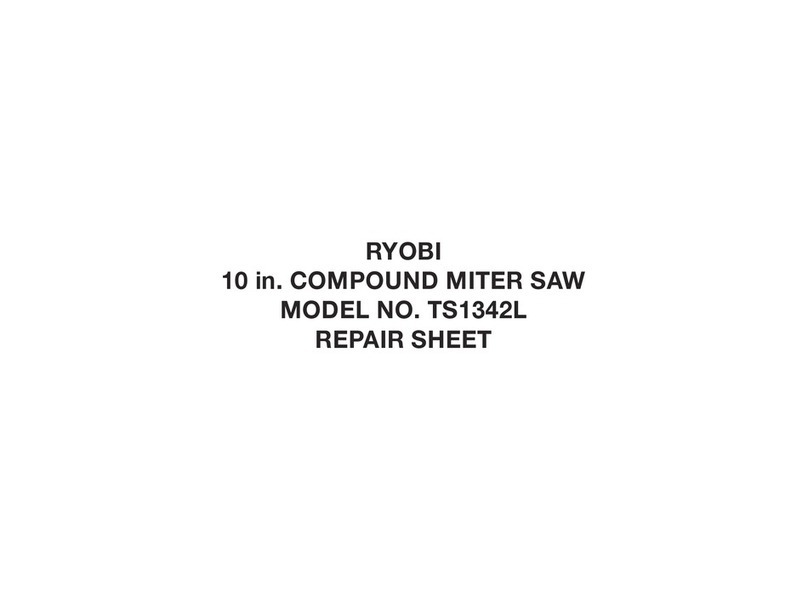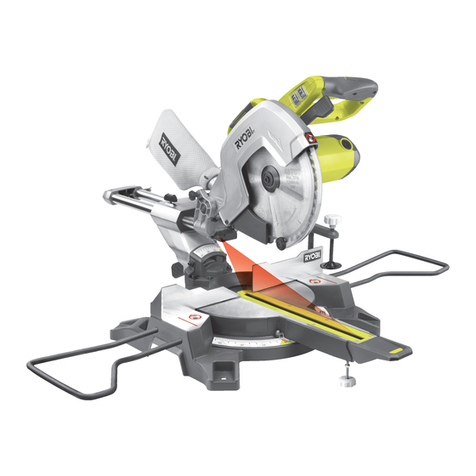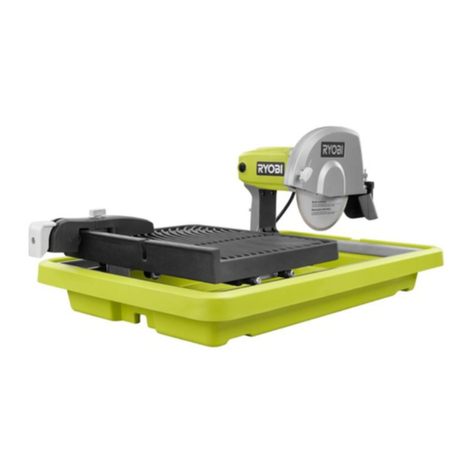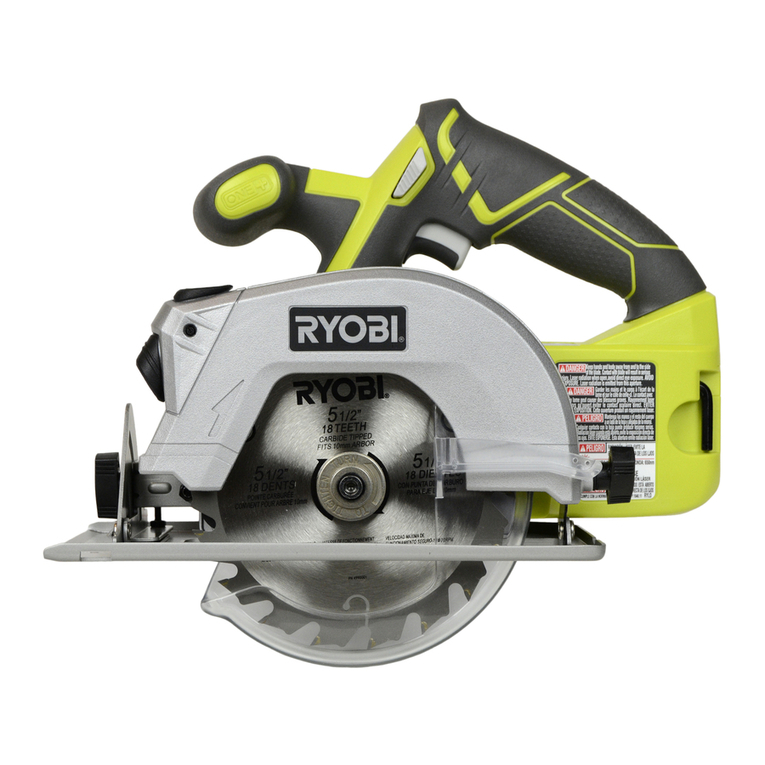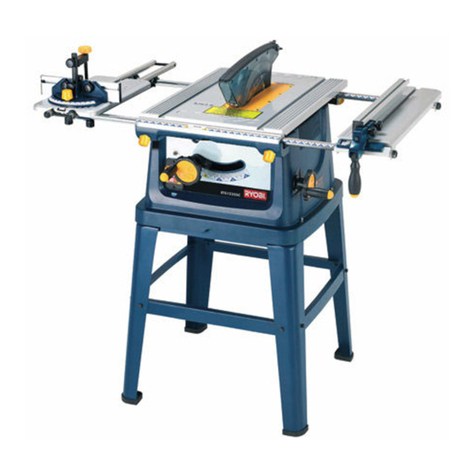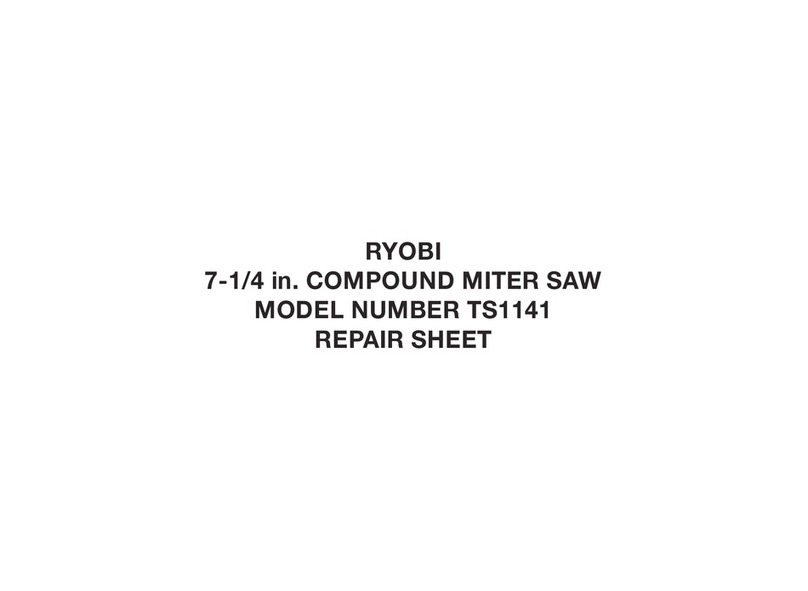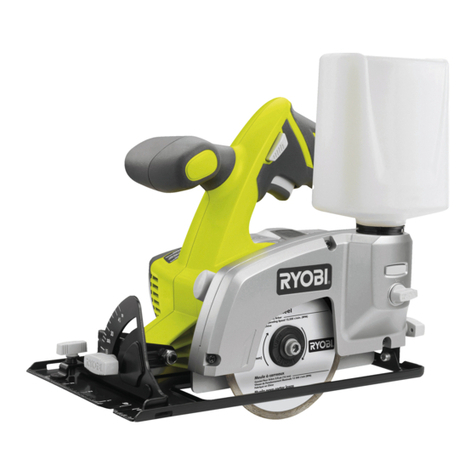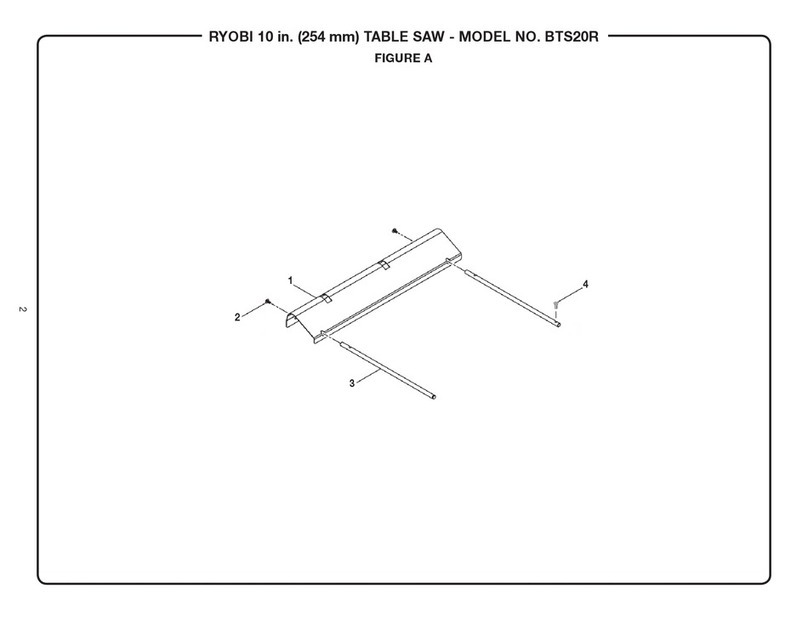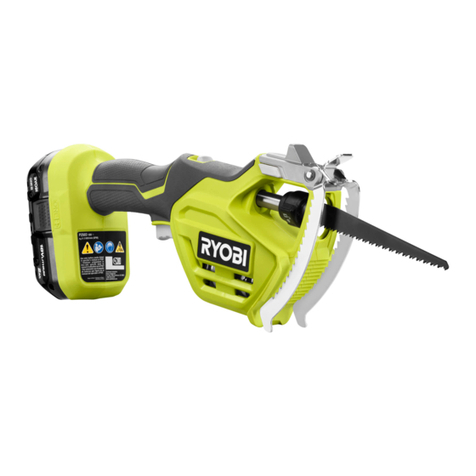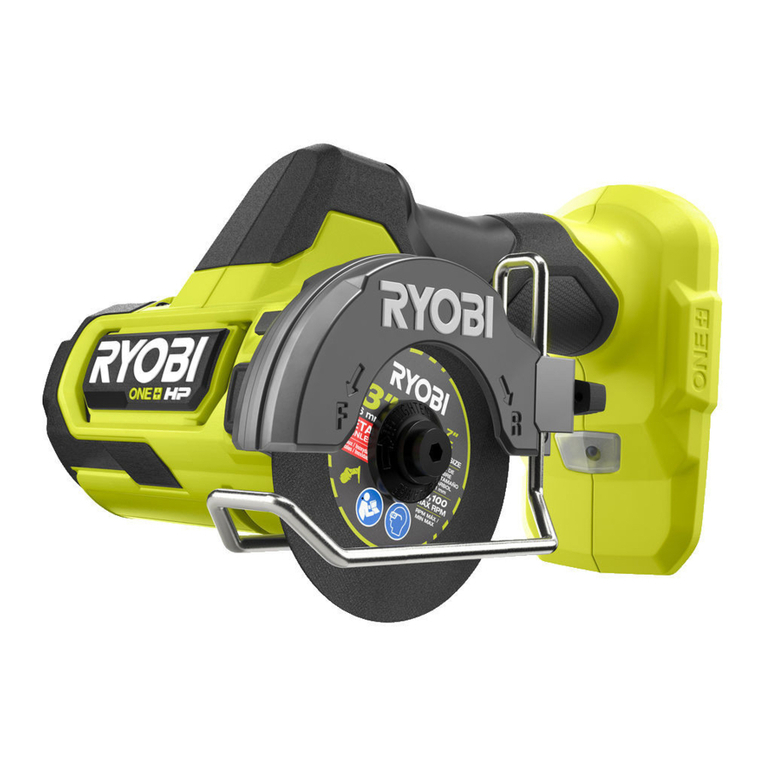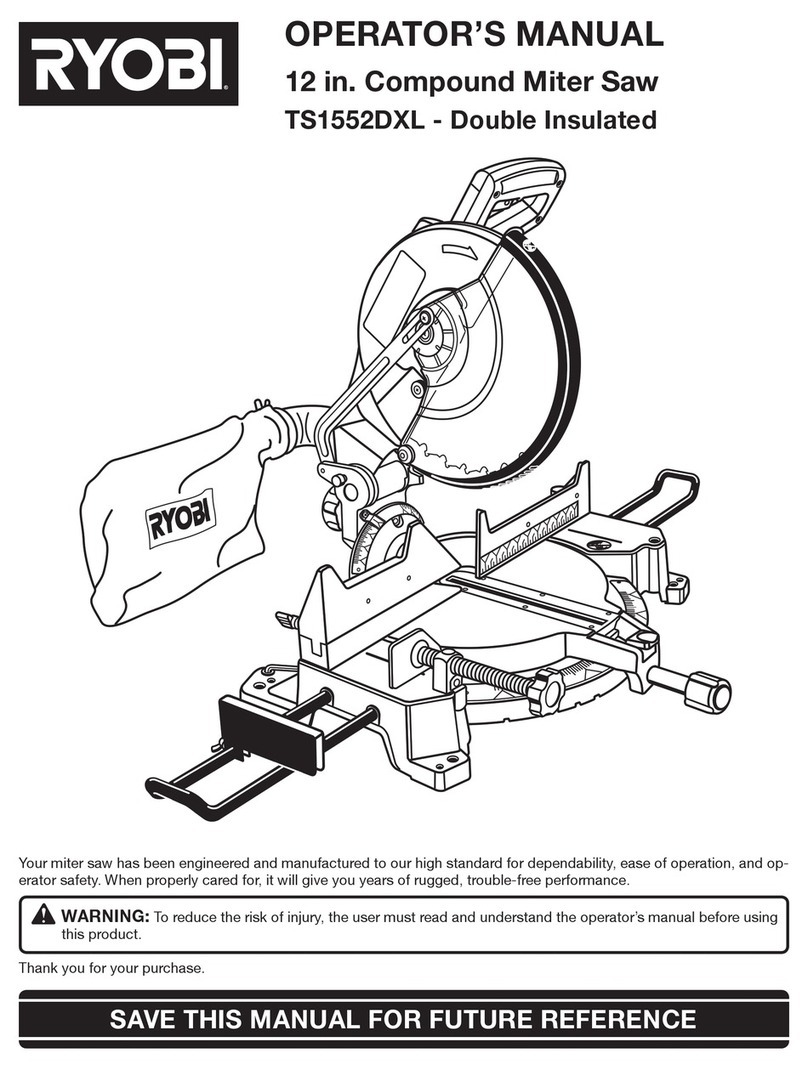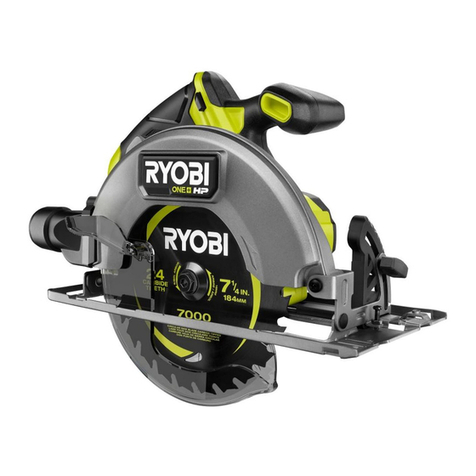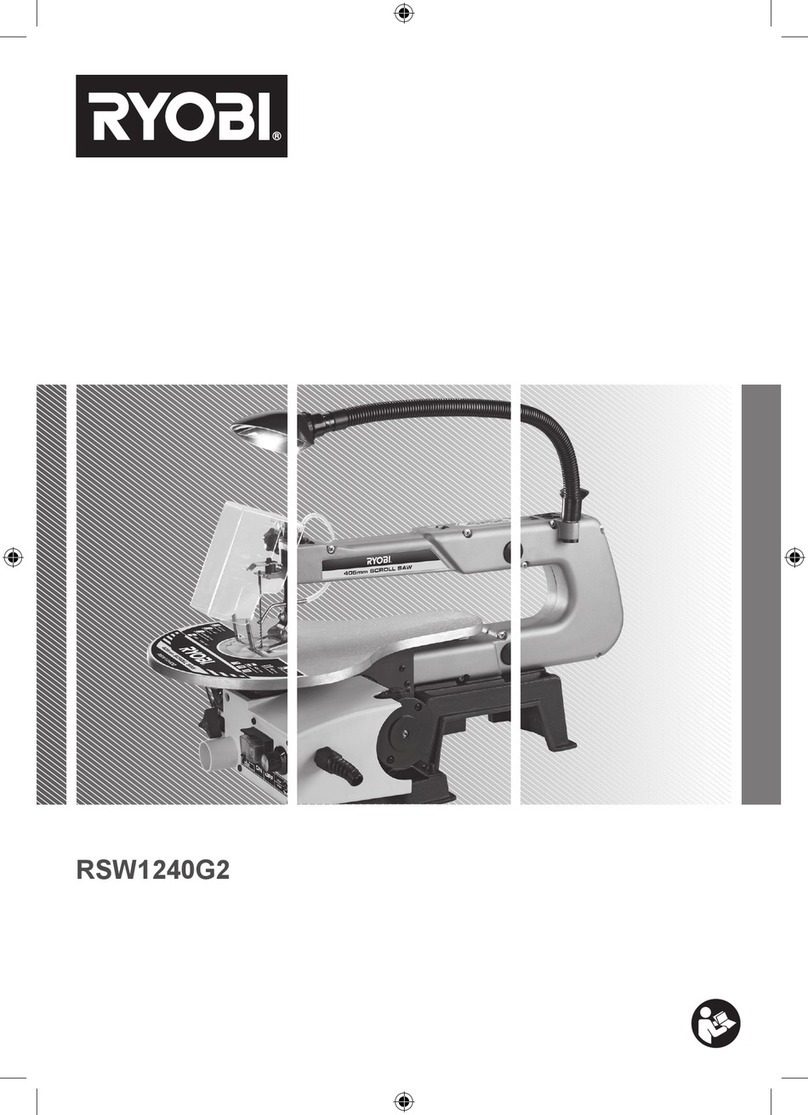
Page 4
■USE THE PROPER EXTENSION CORD. Make sure
your extension cord is in good condition. When using an
extensioncord,besuretouseoneheavyenoughtocarry
thecurrentyourproductwilldraw.Anundersizedcordwill
causea dropinlinevoltageresultinginloss ofpower and
overheating. A wire gage size (A.W.G.) of at least 16 is
recommended for an extension cord 100 feet or less in
length.Ifindoubt,usethenextheaviergage.Thesmaller
the gage number, the heavier the cord.
■INSPECT EXTENSION CORDS PERIODICALLY and
replace if damaged.
■DRESSPROPERLY.Donotwearlooseclothing,gloves,
neckties, rings, bracelets, or other jewelry. They can get
caught and draw you into moving parts. Rubber gloves
and nonslip footwear are recommended. Also wear pro-
tective hair covering to contain long hair.
■ALWAYS WEAR SAFETY GLASSES WITH SIDE
SHIELDS.Everyday eyeglasseshave onlyimpact-resis-
tant lenses; they are NOT safety glasses.
■PROTECT YOUR LUNGS. Wear a face or dust mask if
the cutting operation is dusty.
■PROTECT YOUR HEARING. Wear hearing protection
during extended periods of operation.
■SECUREWORK.Useclampsoravisetoholdworkwhen
practical. It's safer than using your hand and it frees both
hands to operate tool.
■DO NOT OVERREACH. Keep proper footing and bal-
ance at all times.
■MAINTAIN TOOLS WITH CARE. Keep tools sharp and
clean for better and safer performance. Follow instruc-
tions for lubricating and changing accessories.
■DISCONNECT ALL TOOLS. When not in use, before
servicing, or when changing attachments, blades, bits,
cutters,etc.,alltoolsshould bedisconnectedfrompower
supply.
■AVOID ACCIDENTAL STARTING. Be sure switch is off
when plugging in.
■USE RECOMMENDED ACCESSORIES. The use of
improper accessories may cause risk of injury.
■NEVER STAND ON TOOL. Serious injury could occur if
the tool is tipped or if the blade is unintentionally con-
tacted.
■CHECK DAMAGED PARTS. Before further use of the
tool, a guard or other part that is damaged should be
carefullycheckedtodeterminethatitwilloperateproperly
andperform itsintendedfunction.Checkforalignmentof
movingparts,bindingofmovingparts,breakageofparts,
sawstability,mountingandanyotherconditionsthatmay
affectitsoperation.Aguard orotherpartthatisdamaged
must be properly repaired or replaced by a qualified
service technician at an authorized service center to
avoid risk of personal injury.
■DIRECTION OF FEED. Feed workinto bladeagainstthe
cutting portion of the blade only.
■NEVERLEAVETOOLRUNNINGUNATTENDED.TURN
THE POWER OFF. Do not leave tool until it comes to a
complete stop.
■USE ONLY CORRECT BLADES. Use the right blade
size,style andcutting speedfor thematerial andthetype
of cut. Blade teeth should point down toward the table.
Sharp blades minimize stalling and kickback. Correctly
adjust blade tension.
■TO PROTECT THE OPERATOR and minimize blade
breakage, ALWAYS adjust the hold down foot to apply
light pressure to the workpiece. Never operate the saw
with any guard or cover removed. Make sure all guards
are operating properly before each use.
■KEEP HANDS AWAY FROM CUTTING AREA. Do not
hand hold pieces so small that your fingers go under the
blade guard. Never reach underneath work or behind,
under, or within three inches of the blade and its cutting
path with your hands and fingers for any reason. Do not
attempt to remove cut material when blade is moving.
WARNING: Blades coast after turn off.
■AVOID PINCHING THE BLADE. Be cautious when cut-
ting off material which is irregular in cross section. For
example, molding must lay flat on the table and not be
permitted to rock.
■DO NOT ABUSE CORD. Neveryank cordtodisconnect
it from receptacle. Keep cord from heat, oil, and sharp
edges.
■INSPECT TOOL CORDS PERIODICALLY and if dam-
aged, have repaired by a qualified service technician at
an authorized service center. Stay constantly aware of
cord location and keep it well away from the blade.
■DO NOT USE TOOL IF SWITCH DOES NOT TURN IT
ON AND OFF. Have defective switches replaced by a
qualified service technician at an authorized service
center.
■KEEPTOOLDRY,CLEAN,ANDFREEFROMOILAND
GREASE. Always use a clean cloth when cleaning.
Never use brake fluids, gasoline, petroleum-based prod-
ucts, or any solvents to clean tool.
■A LARGE PIECE OF MATERIAL SHOULD BE SUP-
PORTEDwhilecutting.Tominimizeriskofbladepinching
andkickback,alwayssupportlongworkpieces.Sawmay
slip, walk or slide while cutting long or heavy boards.
RULES FOR SAFE OPERATION

